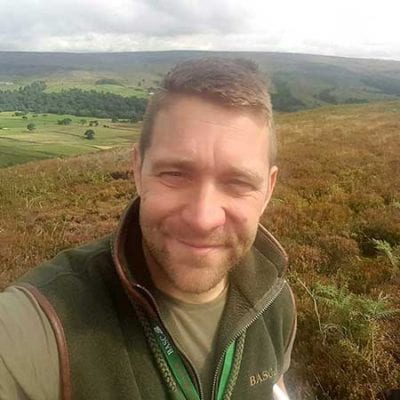Grouse: the perfect positive indicator

Gareth Dockerty
With the new season just days away, BASC’s head of uplands Gareth Dockerty takes a look at how grouse can be a positive indicator to the health of the overall moorland biodiversity.
This Friday is the start of the grouse season, a date many of us look forward to each year.
The 12th August provides the shooting community with a chance to celebrate so much more than just shooting. It can and should be a platform to discuss the many benefits of grouse and game shooting for UK communities, wildlife, and the economy.
Sadly, those against shooting have tarnished the very word “grouse”. They’ve attempting to create a cartoon beast, closer to a mythical dragon than the native, plucky gamebird we should all admire.
A positive indicator
To borrow a phrase from Natural England, grouse are simply a positive indicator. They are a ground nesting bird which represent a good benchmark for the health of the overall moorland biodiversity.
In very simple terms, if the grouse are doing well, other key species like the curlew, lapwing and golden plover are also flourishing and with habitat too for the recovering hen harrier.
If grouse numbers are ok, the moorland landscape will be attracting millions of visitors with its stunning purple glow, the precious carbon will be safely locked in the peat below. With pubs and restaurants hailing a welcome return of grouse, chefs and butchers will be keen to make the best of this ethical, local, and nutritious seasonal food.
The start of the grouse season is a celebration of wildlife, tourism, and the protection of rural economies. Non-shooters can celebrate good grouse numbers without being actively involved as a participant. In fact, they have probably already visited a grouse moor, it’s just that not everyone realises it.
Can other types of shooting learn from positive indicators
All forms of shooting can learn something from using a key species to demonstrate our many benefits.
From deer managers to game shoots, sustainable shooting has a positive impact on species and habitats, so why not find your shoot’s positive indicator?
If species your shoot supports is known by the public or is of conservation concern like the curlew, yellowhammer, or red squirrel. Then the indicator could be the grey partridge calling in the field margins or the variety of flowers growing in the cover crop.
The same rules apply, if the shoot is doing well…the positive indicator is doing well and thus the wildlife and local community benefit from the shoots hard work.
The objective is to get people to understand that when they see that species it represents the year-round hard work of the shoot and gamekeeper. The predator control, cover crop planting, habitat management and feeding gets linked to that species and the local community are reminded that shoots are also important areas of practical conservation.
Why not pick a species, and start talking to people about it and see what impact this has?
Back to grouse
The overall forecast for grouse numbers is better than the last few years, although the recent very hot and dry weather will not have helped.
The good news is there will be moors able to shoot and grouse will be back on the menu. Due to this there will be a landscape to visit, hotels to stay in and a home to some of our most threatened species. In short, there’s a lot to celebrate; it’s so much more than just a grouse moor.
Want to read more blogs?
Head to our Offbeat pages here.
